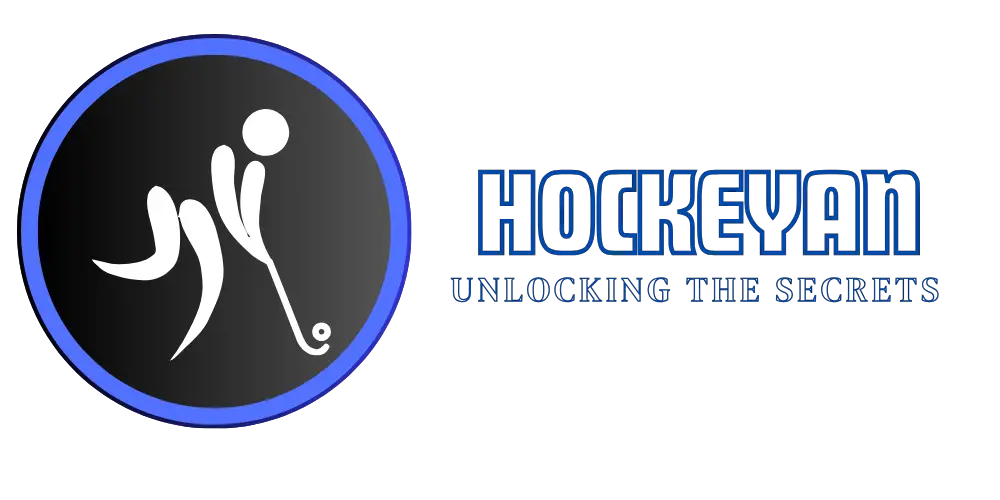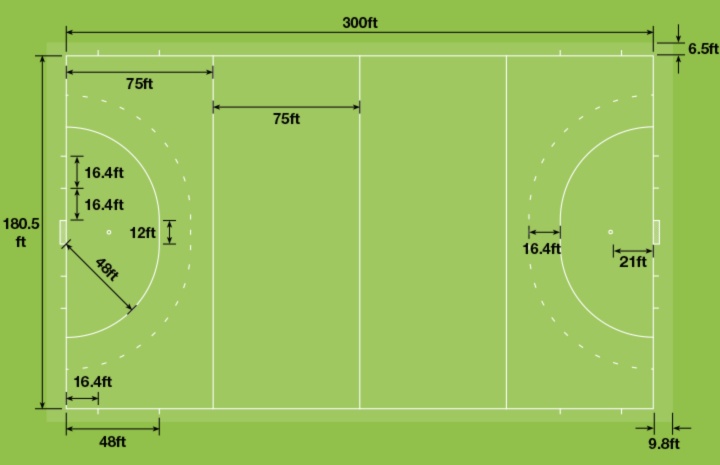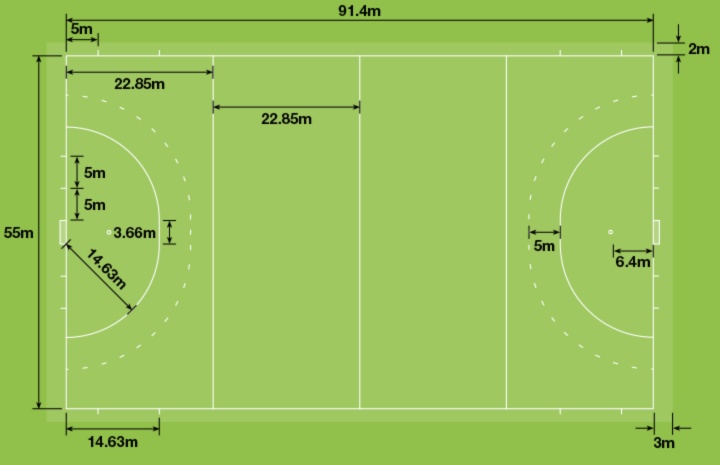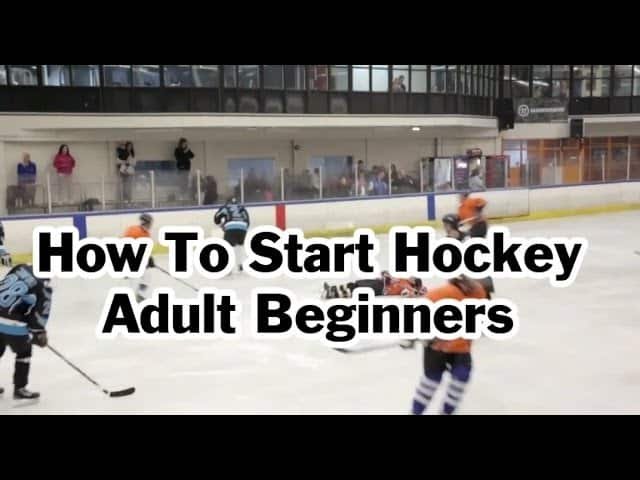A hockey pitch is a field where hockey games are played. It measures 91.4 meters by 55 meters.
A hockey pitch, often called a hockey field, is the standard playing surface for field hockey games. These pitches are typically synthetic turf, offering a smoother and faster playing surface than natural grass. The pitch is marked with specific lines and circles that define the playing areas, including the goal circles, 23-meter lines, and the halfway line.
Proper maintenance is crucial to ensure optimal playing conditions and player safety. Hockey pitches are found in schools, clubs, and sports complexes worldwide, reflecting the sport’s global popularity. Understanding a hockey pitch’s layout and dimensions is essential for players and enthusiasts.
The Evolution Of The Hockey Pitch
The hockey pitch has seen significant changes over time, which have shaped the way the game is played today. Understanding evolution helps us appreciate modern games better.
From Grass To Synthetic
Initially, hockey was played on natural grass fields. These fields were uneven and affected the ball’s movement. Players had to adapt to unpredictable bounces and varying speeds. This made the game slower and more challenging.
In the 1970s, the introduction of synthetic turf revolutionized the sport. Synthetic pitches provided a smooth and consistent surface. This change improved ball control and speed. Matches became faster and more exciting to watch.
Today, most professional games are played on synthetic surfaces. These pitches require less maintenance, offer uniform playing conditions, and allow for more precise and skilful play.
Impact On Gameplay
The switch to synthetic surfaces has had a profound impact on gameplay. Here are some fundamental changes:
- Speed: The game is much faster now. Players can move the ball quickly and efficiently.
- Precision: Passes and shots are more accurate. The ball rolls smoothly on synthetic turf.
- Skills: Players can showcase advanced techniques. The consistent surface supports skilful play.
The evolution of the hockey pitch has also influenced player fitness. The faster pace demands higher levels of stamina and agility. Training programs have adapted to these new requirements.
Below is a table summarising the key differences between grass and synthetic pitches:
| Aspect | Grass | Synthetic |
|---|---|---|
| Surface | Uneven | Consistent |
| Maintenance | High | Low |
| Speed | Slower | Faster |
| Ball Control | Variable | Precise |
The shift from grass to synthetic pitches has undeniably transformed hockey. The game is now faster, skilful, and more enjoyable to watch.
Types Of Hockey Pitches
Hockey pitches come in different types, each with unique features. These pitches are designed to improve the game and ensure player safety. Understanding these types can help you choose the best surface for playing hockey.
Water-based Turfs
Water-based turfs are the most popular choice for professional hockey. These pitches are irrigated before play to create a smooth, fast surface. The water reduces friction, allowing the ball to glide effortlessly. Players can also make quick and sharp turns on this surface.
Benefits of water-based turfs include:
- Fast ball speed
- Enhanced player movement
- Reduced risk of injuries
These turfs are primarily used in international tournaments and top-level leagues.
Sand-dressed Courts
Sand-dressed courts are another common type of hockey pitch. These pitches have a thin layer of sand between the fibres, which provides stability and grip for players.
Advantages of sand-dressed courts include:
- Cost-effective maintenance
- Good ball control
- Durability
These pitches are suitable for schools and local clubs due to their affordability.
Semi-water Pitches
Semi-water pitches are a hybrid between water-based and sand-dressed turfs. These pitches require less water than full water-based turfs, making them more sustainable.
Key features of semi-water pitches:
- Moderate ball speed
- Reduced water usage
- Balanced playing conditions
These pitches are ideal for community centers and recreational facilities.
| Type | Maintenance | Cost | Ideal For |
|---|---|---|---|
| Water-Based Turfs | High | Expensive | Professional Leagues |
| Sand-Dressed Courts | Low | Affordable | Schools & Clubs |
| Semi-Water Pitches | Moderate | Moderate | Community Centers |
Each type of pitch offers unique benefits. Choose the one that fits your needs and budget.
Key Features Of A Standard Hockey Pitch
The key features of a standard hockey pitch ensure the game is fair and competitive. Understanding these features helps players and fans appreciate the sport more deeply.
Dimensions And Markings
A standard hockey pitch is rectangular and measures 91.4 meters in length and 55 meters in width. The pitch is divided into several sections with specific markings:
- Halfway Line: Divides the pitch into two equal halves.
- 23-meter Lines: Marked 23 meters from each backline.
- Shooting Circle: A semi-circle with a radius of 14.63 meters from each goal.
- Penalty Spot: Located 6.4 meters from the goal line.
These markings ensure players know their positions and play within the rules.
Surface Characteristics
The surface of a hockey pitch can be either natural grass, sand-dressed, or water-based artificial turf. Each type has specific characteristics:
| Surface Type | Characteristics |
|---|---|
| Natural Grass | Traditional, but can be uneven and affected by weather. |
| Sand-Dressed Turf | More even, slower ball speed. |
| Water-Based Turf | Fast ball speed, consistent surface. |
Water-based turf is the most preferred for professional games due to its speed and consistency.
Credit: www.harrodsport.com
Maintenance Essentials For Optimal Performance
Maintaining a hockey pitch is crucial for player safety and optimal performance. Regular care ensures a smooth, safe, and durable playing surface. This guide covers essential maintenance routines.
Regular Cleaning Routines
Regular cleaning is vital for keeping the hockey pitch in top condition. Dirt, debris, and organic matter can affect play quality.
- Sweeping: Sweep the pitch weekly to remove leaves and dirt.
- Washing: Use a mild detergent and water to clean the surface monthly.
- Grooming: Brush the pitch fibers every other week to maintain texture.
Cleaning routines improve the lifespan of the pitch. They also ensure a consistent playing experience.
Long-term Upkeep Strategies
Long-term upkeep strategies are essential for the pitch’s durability. These strategies help avoid costly repairs.
- Inspection: Conduct bi-annual inspections to identify wear and tear.
- Repairs: Fix any tears or seams immediately to prevent further damage.
- Rejuvenation: Schedule professional deep cleaning and rejuvenation every few years.
Long-term upkeep ensures the pitch remains safe and playable for years. Regular inspections and timely repairs are key to long-term success.
Maintaining a hockey pitch requires both regular cleaning routines and long-term strategies. Consistent care leads to a safer, more enjoyable game.
Equipment And Gear For Different Surfaces
Playing hockey requires the right equipment for different surfaces. Using proper gear ensures safety and performance. This section covers key equipment for hockey players.
Footwear Considerations
Choosing the correct footwear for hockey is essential. Each surface type demands specific shoes. Here are some tips for selecting hockey footwear:
- Artificial Turf: Opt for shoes with rubber studs. They provide better grip.
- Indoor Surfaces: Choose non-marking rubber soles. They prevent slipping and protect the floor.
- Grass Fields: Select cleats with longer studs. They offer stability and traction.
Proper footwear reduces injury risks and enhances your play.
Stick Selection
The hockey stick is a crucial piece of equipment. Different surfaces require different sticks. Consider these factors when choosing your stick:
- Material: Composite sticks are light and strong. Wooden sticks provide a traditional feel.
- Length: Ensure the stick reaches your hip bone. Proper length aids control.
- Bow: Low-bow sticks are great for drag flicks. Mid-bow sticks offer balanced control.
Using the right stick enhances your skills and comfort.
Always match your gear to the playing surface.
Playing Techniques For Enhanced Control
Mastering control techniques on a hockey pitch is key for success. Players need to focus on different skills to improve their game. This section will cover important techniques to enhance control.
Dribbling And Passing
Dribbling is the art of moving the ball with control. Players use their sticks to keep the ball close. Practicing dribbling helps maintain possession. It also allows players to navigate through opponents.
Passing is essential for team play. Accurate passes lead to scoring opportunities. Short and quick passes often work best. It keeps the ball moving and confuses the defenders. Players should practice both short and long passes.
| Technique | Benefits |
|---|---|
| Dribbling | Improves ball control and possession. |
| Passing | Enhances team coordination and scoring chances. |
Defensive And Offensive Tactics
Strong defensive tactics are crucial. Players need to block opponents and protect the goal. Positioning is important. Always stay between the opponent and the goal. Use the stick to intercept passes and tackle.
Offensive tactics aim to create scoring chances. Players should move without the ball. This creates space and confuses defenders. Passing and dribbling are key. Quick decisions and teamwork make a strong offense.
- Defensive Tactics:
- Block opponents.
- Protect the goal.
- Intercept passes.
- Effective tackling.
- Offensive Tactics:
- Create space.
- Quick passing.
- Dribble effectively.
- Teamwork and coordination.
Upgrading Your Home Pitch
Upgrading your home hockey pitch can be exciting. A better pitch improves your skills. It also makes games more fun. Here are some tips to help you upgrade.
Installation Tips
Installing a hockey pitch at home can be simple with the right tips.
- Choose the right location: Pick a flat, open space.
- Prepare the ground: Clear debris and level the area.
- Select the right surface: Artificial turf is durable and low-maintenance.
- Mark boundaries: Use paint or tape for clear lines.
- Install goals: Make sure they are secure and safe.
Cost-effective Solutions
Upgrading your pitch doesn’t have to be expensive. Here are some budget-friendly ideas.
- Use recycled materials: Look for second-hand turf and equipment.
- DIY options: Build your own goals using PVC pipes.
- Seek community help: Ask friends or neighbors for assistance.
- Buy in bulk: Purchase turf and paint in larger quantities.
- Consider temporary setups: Use portable goals and removable lines.
| Item | Cost-Saving Tip |
|---|---|
| Artificial Turf | Buy second-hand or remnants |
| Goals | DIY with PVC pipes |
| Boundary Markers | Use tape or paint |
Global Standards And Regulations
A hockey pitch must meet global standards and regulations. These ensure fair play and safety for all players. The International Hockey Federation (FIH) sets these standards.
Fih Certification Criteria
The FIH has strict criteria for hockey pitches. These criteria include:
- Surface type
- Dimensions
- Markings
The surface must be smooth and even. It can be made of artificial grass, sand-filled, or water-based turf. The dimensions of the pitch should be 91.4 meters long and 55 meters wide. The markings must include lines for the goal, shooting circle, and center line.
Safety Protocols
Safety is a top priority on a hockey pitch. Here are some key safety protocols:
- Regular maintenance checks
- Proper lighting for night games
- Clear and visible boundary lines
Regular maintenance checks help avoid injuries. Proper lighting ensures players see clearly during night games. Clear and visible boundary lines prevent confusion during play.
Another crucial safety aspect is the padding on goal posts. This padding helps reduce injuries during collisions.
| Criteria | Requirement |
|---|---|
| Surface Type | Smooth and even |
| Dimensions | 91.4m x 55m |
| Markings | Goal, shooting circle, center line |
| Lighting | Proper for night games |
| Boundary Lines | Clear and visible |
Following these standards and protocols ensures a safe and fair game for everyone.
Innovations In Hockey Pitch Technology
Hockey pitches are evolving rapidly. These innovations are transforming the game. They make it safer and more eco-friendly. Let’s explore some of these advancements.
Eco-friendly Developments
New hockey pitches use eco-friendly materials. These materials reduce environmental impact. They are made from recycled plastics and other sustainable resources.
Many pitches now feature water-saving systems. These systems reduce water use by up to 50%. They keep the turf in top condition without wasting water.
| Feature | Benefit |
|---|---|
| Recycled Materials | Reduces waste and pollution |
| Water-Saving Systems | Conserves water resources |
Advancements In Turf Technology
Modern turf technology has greatly improved. The new turfs are more durable and provide better traction. This reduces injuries and enhances player performance.
These turfs also drain water quickly. This ensures that games can continue even after heavy rain. The surface remains safe and playable.
- Durability: Lasts longer and requires less maintenance
- Traction: Provides a better grip for players
- Water Drainage: Keeps the pitch playable in all weather
These advancements make hockey more enjoyable for players and fans. They ensure a consistent playing surface, regardless of the weather.
Credit: www.dimensions.com
Selecting The Right Venue For Your Game
Choosing the right hockey pitch can elevate your game. It impacts performance, enjoyment, and safety. The right venue makes a big difference.
Local Clubs And Facilities
Local clubs are often the first choice for players. They offer accessible locations and community support. Here are some benefits:
- Proximity: Close to home, saving time and travel costs.
- Community: Familiar faces and local support.
- Cost-effective: Generally lower fees compared to big venues.
Most local clubs have good facilities. Look for well-maintained pitches, proper lighting, and clean changing rooms. These factors enhance the playing experience.
| Facility | Importance |
|---|---|
| Well-maintained Pitch | Very High |
| Proper Lighting | High |
| Clean Changing Rooms | Moderate |
International Venues For Competition
International venues offer a different experience. They are designed for high-level competitions. These venues have top-notch facilities.
- Advanced infrastructure: World-class pitches and equipment.
- Exposure: Opportunity to play against top teams.
- Professional environment: Experience high-stakes matches.
Competing internationally requires preparation. Ensure your team is ready for the challenge. It can be a life-changing experience.
Credit: www.harrodsport.com
Frequently Asked Questions
What Is A Hockey Pitch Called?
A hockey pitch is called a “hockey field” or “hockey rink. ” The term depends on whether it’s field hockey or ice hockey.
What Are The Dimensions Of A Hockey Pitch?
A hockey pitch measures 100 yards (91. 4 meters) in length and 60 yards (55 meters) in width.
Why Is Hockey Played On A Blue Pitch?
Hockey is played on a blue pitch for better visibility. The blue color contrasts with the white ball, enhancing player and viewer experience. This makes the game easier to follow, especially on TV.
How Many M Is A Hockey Pitch?
A hockey pitch is 91. 4 meters long and 55 meters wide. This standard size is used for international play.
Conclusion
A well-maintained hockey pitch is essential for player performance and safety. The right surface enhances gameplay and reduces injuries. Regular maintenance ensures longevity and quality. Investing in a good hockey pitch supports athletes and boosts the sport’s popularity. Prioritize quality and care for the best hockey experience.







